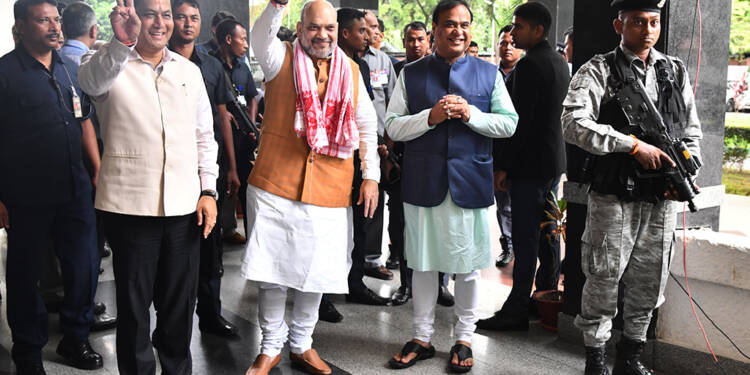The fate of Assamese leaders got sealed in the EVM on 6th April with the end of the last phase voting. In the 126 seats strong Assam Legislative Assembly, 64 seats are needed for the majority and it looks like NDA would easily cross the mark, thanks to its multi-pronged strategy during the election under the leadership of Himanta Biswa Sarma.
On the side of NDA, BJP has contested 92 seats and Atul Bora-led Asom Gana Parishad contested 26 seats. The rest of 8 seats went to United People’s Party Liberal (UPPL), a party that is expected to create advantage for NDA in Bodoland Territorial Region (BTR).
In the last elections when the BJP and its allies Bodoland People’s Front (BPF) and Asom Gana Parishad (AGP) contested, these three together won a combined 86 seats. In this election, too, the party is expected to storm the election thanks to the popularity of Himanta Biswa Sarma, the support to CAA-NRC among Assamese people, the support for UPPL in constituencies of BTR, and the split of Muslim votes.
Although this time the BPF is with the Congress, but it has become clear to the public from the development work done in Assam that somewhere the BJP is better than the Congress. At the same time, before the election, many leaders of the BPF joined the BJP. BJP’s ally UPPL is going to give tough competition to the Bodoland Territorial Region BPF in this area and the saffron party shall benefit heavily from this.
Talking about CAA, this bill saw a lot of violence in Assam and many people were against the BJP as well, but during that time some people came in favour of BJP who were the silent supporters of CAA. CAA also causes confusion as to whether it is good or bad, and therefore it is not as important as health or infrastructure issues.
BJP succeeded in bypassing the CAA issue and portraying Muslims of Bengali origin as the biggest threat to the indigenous communities in Assam. With this, there is a lot of hope of voting in favor of BJP.
The same BJP has also fielded Muslim candidates to woo the Muslim voters of Assam. Not only this, senior leaders of BJP like Jitendra Singh also reached his campaign. In the third phase of elections, the BJP gave a chance to 5 Muslim candidates. It included Ashdul Islam from South Salmara, Abu Bakkar Siddiqui from Bilasipara West, Usman Goni from Jaleshwar, Shaheedul Islam from Janiya, and Hasinara Khatun from Bagbore in western Assam, where Muslim voters play a key role.
These constituencies voted for the AIUDF and Congress candidates in 2016. Two parties Raijor Dal and Assam Jatiya Parishad, formed after the same anti-CAA protest, have also raised several Muslim candidates who will make a dent in the vote bank of Congress and AIUDF.
Himanta Biswa Sarma, the popular politician and master strategist, has played him game very well, and the party is expected to get two-third majority this time just like in the 2016 assembly election.


































